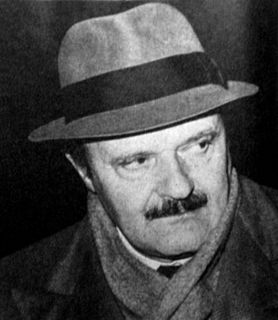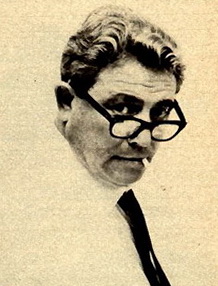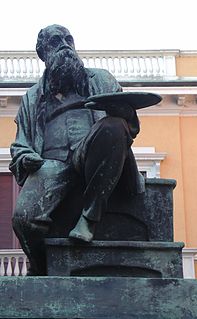
Pompeo Calvi (Milan, 1806–1884) was an Italian painter.

Pompeo Calvi (Milan, 1806–1884) was an Italian painter.
A pupil of Giovanni Migliara, Calvi made his debut at the annual Esposizione dell’Accademia di Belle Arti di Brera in 1828. The repertoire of perspective views drawn directly from the master was revitalised with new subjects as the result of a long journey to Rome and Naples from 1830 to 1832. He was a constant presence at the Brera exhibitions until 1842, when he stopped painting altogether. An honorary member of the Brera Academy of Fine Arts as from 1850 and academic advisor from 1860, he resigned from his official posts in 1868. Regarded by critics as a dilettante of no particular interest, Calvi received important commissions from the Lombard and Piedmontese aristocracy. His commercial success reached its peak when one of his works was purchased for the Belvedere Gallery in Vienna.

Roberto Calvi was an Italian banker, dubbed "God's Banker" by the press because of his close association with the Holy See. He was a native of Milan and was Chairman of Banco Ambrosiano, which collapsed in one of Italy's biggest political scandals.

Vittore Carpaccio was an Italian painter of the Venetian school, who studied under Gentile Bellini. He is best known for a cycle of nine paintings, The Legend of Saint Ursula. His style was somewhat conservative, showing little influence from the Humanist trends that transformed Italian Renaissance painting during his lifetime. He was influenced by the style of Antonello da Messina and Early Netherlandish art. For this reason, and also because so much of his best work remains in Venice, his art has been rather neglected by comparison with other Venetian contemporaries, such as Giovanni Bellini or Giorgione.

Giovanni Luigi "Gianni" Brera was an Italian sports journalist and novelist. This is a description by himself: "My real name is Giovanni Luigi Brera. I was born on 8 September 1919 in San Zenone Po in the province of Pavia, and grew up like a wild man among woods, river banks and still waters. [...] I am a Padan from the banks and flood plains, the bush and the sandbanks. I soon realized I was a legitimate son of the Po".

The Pinacoteca di Brera is the main public gallery for paintings in Milan, Italy. It contains one of the foremost collections of Italian paintings, an outgrowth of the cultural program of the Brera Academy, which shares the site in the Palazzo Brera.

Eleuterio Pagliano was an Italian painter of the Romantic period as well as an activist and fighter of the Risorgimento.

Giovanni Battista Discepoli (1590–1660), also called "Lo Zoppo di Lugano" from his being a cripple, was a Swiss-Italian painter of the Baroque period, active mainly in Milan.

Giuseppe Bertini (1825–1898) was an Italian painter, active in his native Milan.

Domenico Induno was an Italian painter, primarily of genre and historical scenes. His younger brother, Gerolamo, also became a well-known artist and they often worked together.

Pompeo Borra was an Italian painter.

Innocente Cantinotti was an Italian painter.

Mosè Bianchi (1840–1904) was an Italian painter and printmaker.

Ercole Calvi was an Italian painter.

Giacomo Favretto was an Italian painter, mainly depicting genre subjects in Venice, his native city.

Pompeo Mariani was an Italian painter.

Giosuè Argenti was an Italian sculptor.
Umberto Bazzoli was an Italian painter, mainly of landscapes and portraits.
Emilio Borsa was an Italian painter of genre and landscape scenes, as well as a portraitist.

Giulio Magnani was a Roman Catholic prelate who served as Bishop of Calvi Risorta (1560–1565).

Count Pompeo Litta Biumi or Pompeo Litta was an Italian historian, genealogist, military officer, politician, and nobleman.
![]() Media related to Pompeo Calvi at Wikimedia Commons
Media related to Pompeo Calvi at Wikimedia Commons